 |
| © Janel Jacobson All Rights Reserved |
This summer I made several new tools, and thought that I would not find the variety useful, but once I began using them, they shortly found their place on the bench during the course of carving. The larger tools are used earlier on and the smaller ones are used when smaller details require them.
The paired photos show the tools from the side and then from the third face, which is a different shape than the opposite sides. Many of the tools can be used as cutting knifes and as scrapers. I employ a great deal of scraping with well-sharpened tools after the bulk of material has been removed.
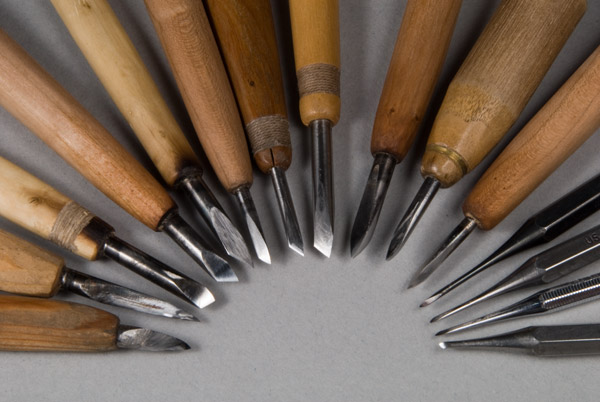
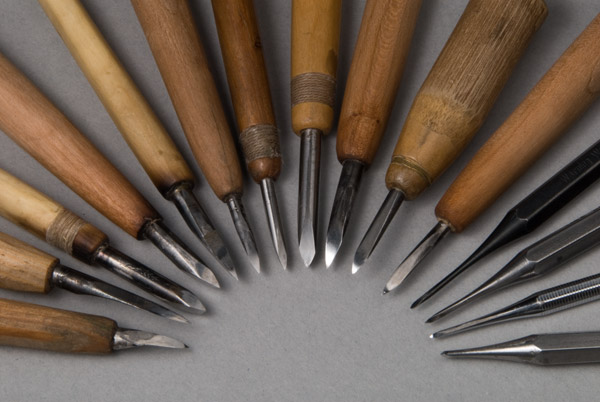
The three sided tools above are loosely modeled after two wonderful tools made by Stephen Myhre. The seventh and eighth tools from the left were made by him. (The two in the middle with the cord wrapping.)
. . . . . . . . . . . . . . . . . . . . . . . . . . . . . . . . . . . . . . . . . . . . . . . . . . . . . . . . . . . . . . . . . . . . . . . .

The above tools are basically triangular in cross section, and are fairly small in size. Favored for undercutting and refining the areas where parts meet, such as frog's toes on a leaf.
. . . . . . . . . . . . . . . . . . . . . . . . . . . . . . . . . . . . . . . . . . . . . . . . . . . . . . . . . . . . . . . . . . . . . . . .
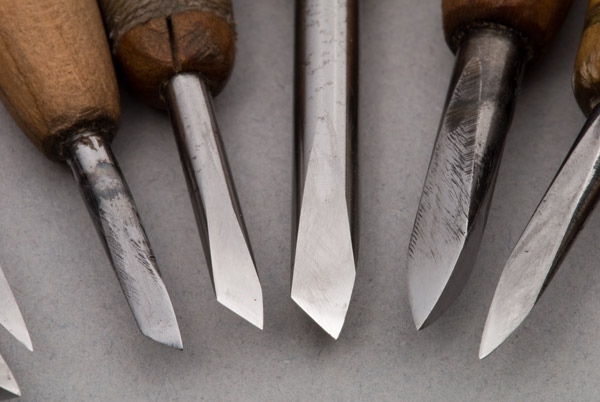
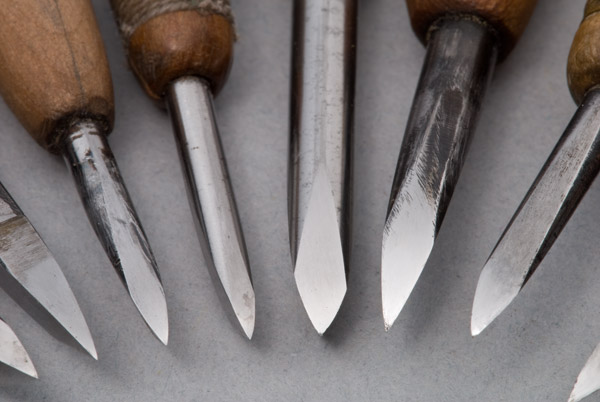
The longer, thinner tools above are used both for cutting and later scraping. The wider angled tools are ofen employed for earlier scraping, and for stronger removal. Kept very sharp they are very useful tools. Also, the various arcs that are formed where the opposite sides meet the third side are very useful as rounded scrapers or straight scrapers. The beauty of this design, for me, is that one tool can be used for scraping in either direction when needing to accomodate the grain in the wood without having to change tools.
. . . . . . . . . . . . . . . . . . . . . . . . . . . . . . . . . . . . . . . . . . . . . . . . . . . . . . . . . . . . . . . . . . . . . . . .
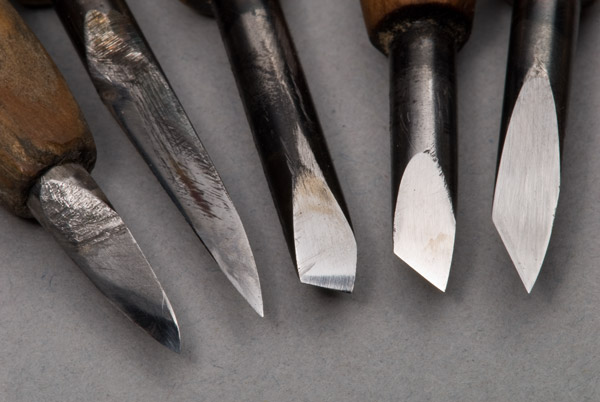

The two tools above to the left are rather odd experiments, on their way to being failures while I was shaping the tools, but, they have found their way onto the bench at times and work like no other of the tools that I have.
. . . . . . . . . . . . . . . . . . . . . . . . . . . . . . . . . . . . . . . . . . . . . . . . . . . . . . . . . . . . . . . . . . . . . . . .
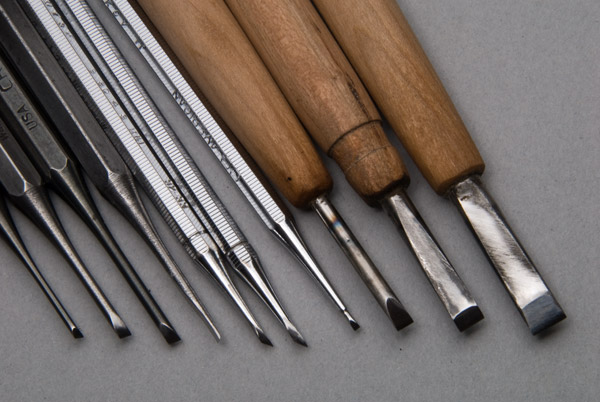
This is another array of tools that are very often used. The fourth from the left is on its side to show a slight arch. It has a cutting edge that is like a straight chisel but its curved shaft helps when a straight shaft would get in the way of using the tool. The three in the middle are old dental tools, and are quite important for detail work. I do use straight chisels and gouges at times, and made a few this summer, to see how it would go. I enjoy using them.
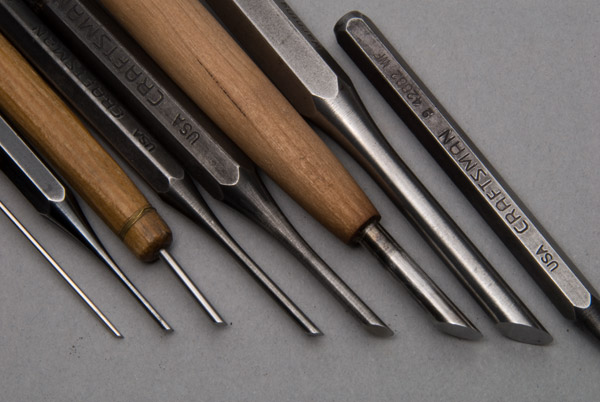
I have not made gouges in the usual fashion. The above set shows a range of tools that are scraper/gouges that have been made from as small as sewing needles to a 1/4" pin punch.
Sears Craftsman pin punches, cold formed by gentle grinder and cooling dips in water then using water stones to final shape and sharpen, can make very useful tools.
. . . . . . . . . . . . . . . . . . . . . . . . . . . . . . . . . . . . . . . . . . . . . . . . . . . . . . . . . . . . . . . . . . . . . . . .
The next two images show a different style of tools. The first image shows tools that came from Japan. They were made for ivory carving, but they work well with boxwood and other very hard and dense woods.
The bottom image show a few first attempts at translating a need into a tool modeled after the Japanese tools. The two in the middle I thought might be helpful with himotoshi, the cord holes in netsuke.

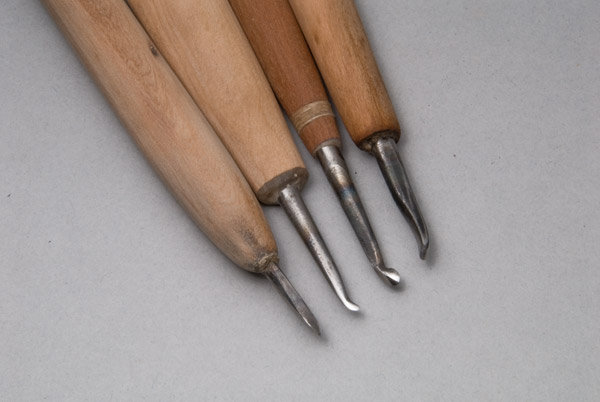
. . . . . . . . . . . . . . . . . . . . . . . . . . . . . . . . . . . . . . . . . . . . . . . . . . . . . . . . . . . . . . . . . . . . . . . .